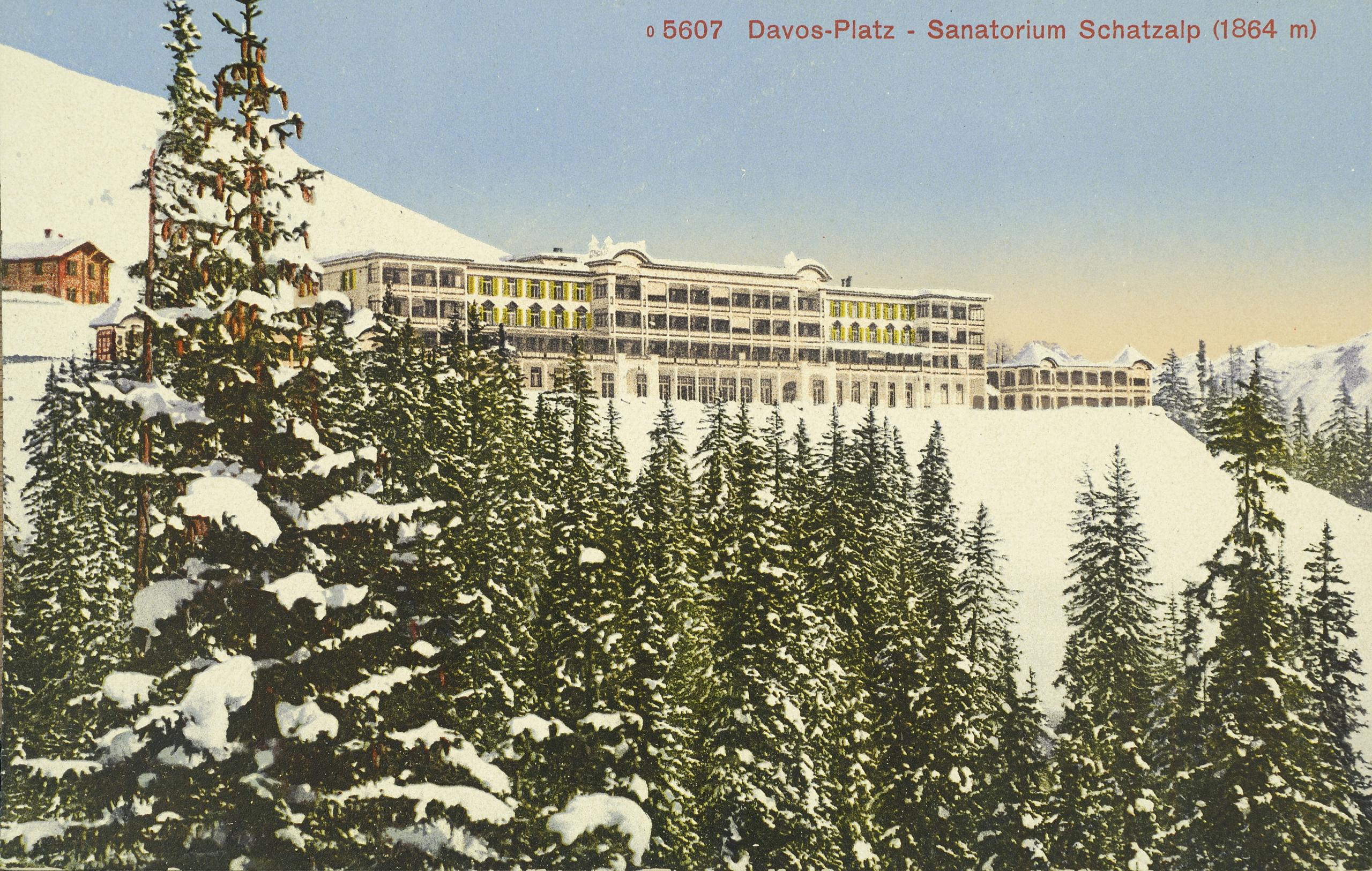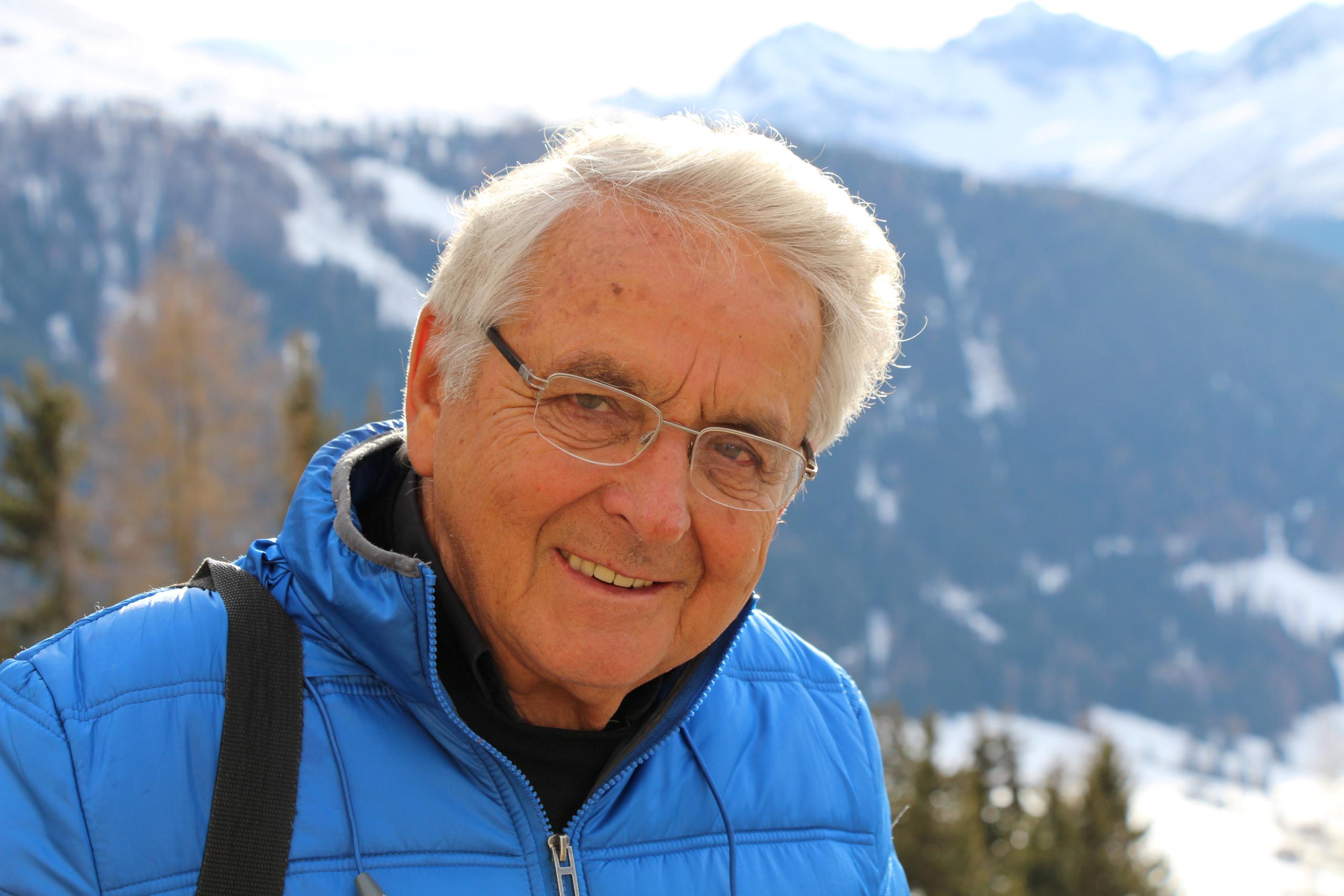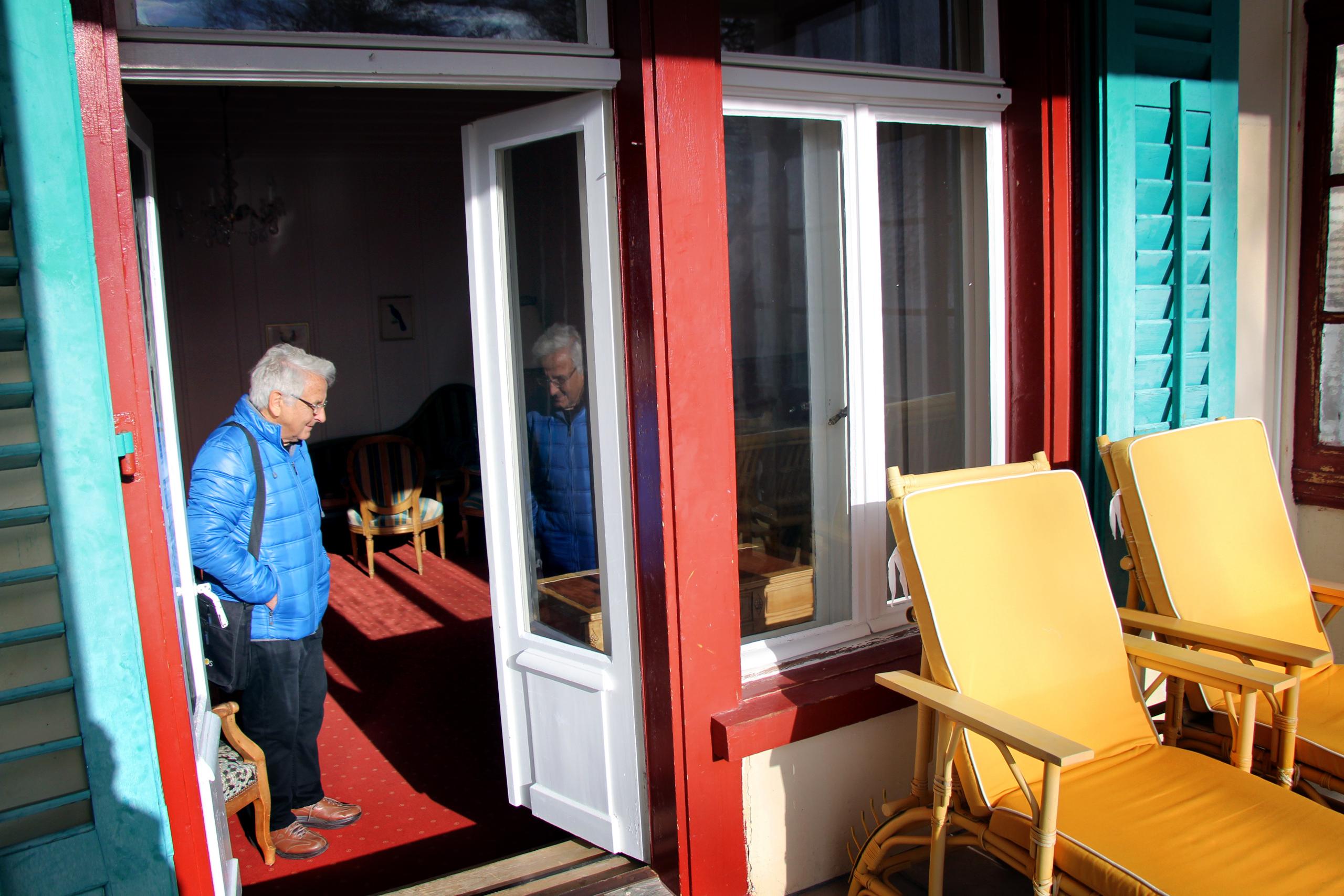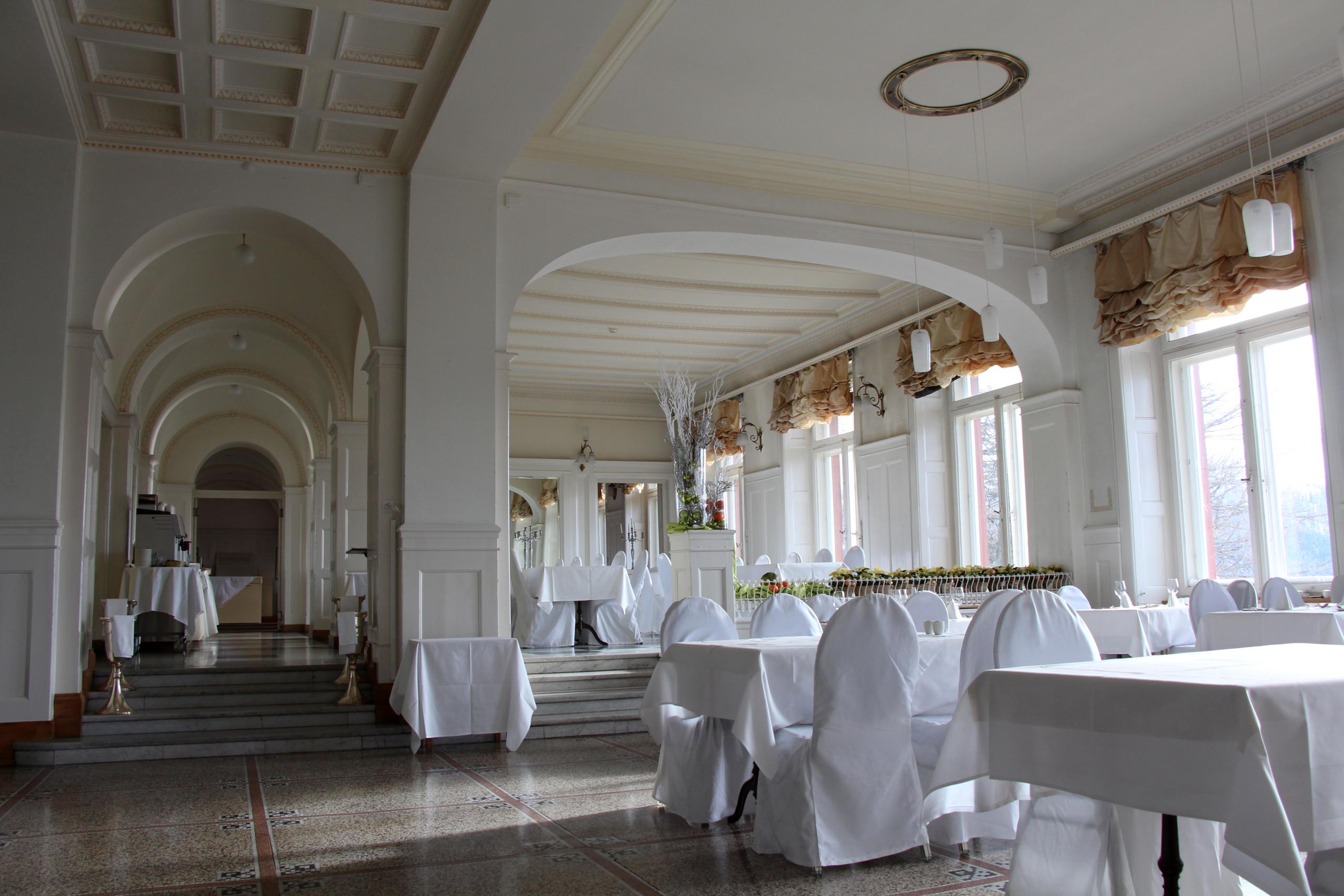A breath of fresh air for an alpine village

It was a dreaded disease – not WEF’s meeting of the world’s elite – that transformed the mountain resort of Davos, its economy and its future.
Throwing open a pair of carefully restored, old wooden doors and stepping onto a bright, sunny balcony, Klaus Bergamin takes a deep breath of fresh alpine air. “This is something special, isn’t it?” he proclaims. Bergamin is taking in the view over Davos from the Hotel Schatzalp, a historic hotel built in 1900, which used to be a luxury sanatorium for tuberculosis sufferers, something of which Bergamin has first-hand experience.
Davos, a small town in southeastern Switzerland, accidentally became a haven for tuberculosis sufferers in the 1800s and 1900s, as people came to believe the mountain air could cure them. The Davos of today still has a number of health-related businesses. The Swiss Institute for Allergy and Asthma Research, the Zurich Rehabilitation Centre (Zürcher RehaZentrum Davos), or the AO Research Institute, to name a few of the largest.

But it is most well-known for hosting the annual meeting of the World Economic Forum, each January. CEOs, politicians, celebrities and social-entrepreneurs fill the town’s hotels with their large sunny balconies and terraces, a reminder of the location’s past. Walking through the streets there are old sanatoriums at every turn, recognisable by the long, wide balconies that cover the hotels’ fronts, a leftover from when patients were wheeled out in their beds or spent hours breathing in the fresh air from the comfort of a sun lounger, now occupied by skiers having a drink in the sunshine.
By 1940 Davos had around 40 such medical institutions, which had started to spring up in the 1860s after Dr Alexander Spengler pioneered a tuberculosis (TB) treatment of hours lying on sun loungers in the fresh air, drinking lots of milk and generally eating well. He had moved to the then small farming village as the local doctor, but noticed Davos seemed to be immune from the disease that was ravaging its way through the world’s population. In English towns in 1871-1880, there were 25.5 deaths per 10,000 inhabitants due to tuberculosis; in German towns in 1877 that figure was 38.1 deaths per 10,000 inhabitants. In 1900 alone in Switzerland, around 9000 people died of TB.
It was not known exactly why people who came to Davos with TB were able to recover, but it was believed that the climate and above-average hours of sunshine had something to do with it.
A whole business sprung up in Davos as Dr. Spengler spread the word about its healing properties. The village was accommodating everyone from the wealthy foreigners checking into high-class sanatoriums with no expense spared, to the charity cases and those who struggled to cover the cost of the lengthy treatment, which generally lasted for months on end.
A personal diagnosis
Bergamin, now a local historian for the town, knows first-hand what it was like to seek a cure for TB in the Swiss mountains. Born in 1938 in a small village near Davos, Bergamin was diagnosed with tuberculosis at the age of 16.
“I had a lingering fever and I was always tired, my parents sent me to see a doctor at the hospital. Then I wasn’t allowed to go home,” he told swissinfo.ch. He was sent for treatment in Davos, but, being one of six children, with a father who worked as a porter at a hotel, money was tight.
Bergamin was one of the lucky ones however. “Incredibly we never received a bill….my parents never received one bill! Neither from the management, nor from the doctor.” The doctor knew his family couldn’t afford his stay at the sanatorium, so the cost was covered for him. In return, he took on tasks such as playing songs on request in a weekly concert for his fellow patients at the sanatorium and performing on his organ in church on a Sunday.
Bergamin stayed at the church-run Sanitas Sanitorium for 11 months in the mid-1950s, the tail-end of this period in time, as doctors had begun to use antibiotics to treat TB. He still received the old-style treatment, however.

More
The basis of the open-air cure
Bergamin’s family enrolled him on a long-distance course in literature, so he filled the many hours lying outside by reading different books. The constant meals and the hours spent lounging in the sun make the treatment sound quite luxurious, but the 16-year-old did have an awareness of how it could turn out for him.
“In Schmitten, the village where I grew up, four families had died there because of tuberculosis. One after the other. I always had that in the back of my head. But when you’re a youngster, you don’t think about the negatives too much, so I wasn’t depressed.”
Walk on the sunny side
Up at the Hotel Schatzalp life followed a very strict routine. Patients ate five times a day, a first breakfast was at 7.30am, followed by more food at 10.30am. Lunch was at 12.30pm “with 7-13 courses depending on the day”, cake was taken mid-afternoon and dinner was a four-course affair. Every patient also had to fit in two litres of milk on a daily basis. TB makes people lose weight, which is why the disease used to be called ‘consumption’, so doctors at the time believed that eating well and in large quantities would help.

A clock chimed for a change in each activity and patients followed the rules to the book if they wanted to get better.
“The clock chimed for mealtimes, it chimed for lying outside in the sun, it chimed for the patients to go for a walk – everything was organised and run like clockwork,” said Bergamin. The original clock that kept the sanatorium ticking over is still in place in the hospital wing of the hotel, watching over a wide corridor on the second floor along with an abundance of original features, almost as if the hotel has been in frozen in time. The rattan sun loungers still line the balconies with their famous yellow cushions, although lying out in the sun is now entirely optional for guests.
Healthy development
But how do you turn around a past as a treatment centre for a highly infectious and potentially deadly disease, when you are now a modern-day hotel? Sitting in the hotel’s old X-ray room, still with the viewing screens on the wall, the Schatzalp’s general manager, Mark Linder, explained.
“It’s not a museum, it’s a hotel,” he said, “It’s important for us to speak about the history, but now we don’t want to tell everyone that they are having a holiday in a hospital.” Linder added that although they do have guests who come because of the building’s history, their main business is events, seminars or ski breaks.
For the hotel’s events manager, Catherine Hug, the past is an important part of why people come. “We have a beautiful view and history; we have a special atmosphere here”.
Famous names who went to Davos for the cure
Creator of fictional detective Sherlock Holmes, author Arthur Conan Doyle stayed in Davos in 1893-94External link while his wife, Louise, had treatment for TB. He learnt skiing while he was there.
Novelist Robert Louis Stevenson, most famous for ‘Treasure island’ and ‘Strange Case of Dr Jekyll and Mr Hyde’ was advised to stay in Davos for his health, he was there from 1881-82External link.
German writer Thomas Mann stayed in Davos in 1912 while his wife, Katia, received treatment. His visits to her inspired him to write about life there at the time in his novel The Magic MountainExternal link.

In compliance with the JTI standards
More: SWI swissinfo.ch certified by the Journalism Trust Initiative









You can find an overview of ongoing debates with our journalists here . Please join us!
If you want to start a conversation about a topic raised in this article or want to report factual errors, email us at english@swissinfo.ch.